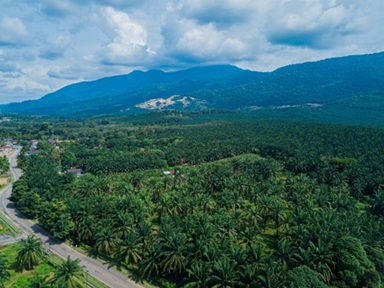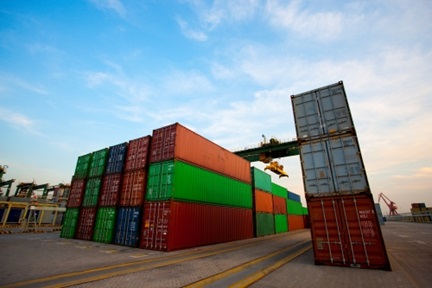Africa climbs the agriculture value chain
Africa grows a wide variety of crops, fruits, and vegetables and yet it imports US$35bn worth of food each year. After years of neglect agriculture is getting the attention it needs.
by Johan Burger

SUPPORT FOR YOUTH AGRIPRENEURS IN KENYA
The Kenyan government created the Empowering Novel Agribusiness-Led Employment (ENABLE) Programme. Co-funded by the African Development Bank (AfDB), ENABLE committed US$18 million to engage youth in agribusiness. Ideally, the outcomes will be enhanced youth employment, increased local income generation, and bridging the emerging succession gaps in agribusiness and its related value chains.
Many youths are reluctant to enter the agriculture sector. This is partly due to image factors such as negative perceptions and attitudes towards agribusiness plus deterring factors such as limited access to financial services. Despite efforts both by the government and the private sector to involve youth in the agriculture sector, youth participation in the many value chains in the agriculture sector remain low.
The ENABLE Programme will operate from the Youth Agri-Business Incubation Centres (YABICs) at identified government centres and in partnership with the private sector across Kenya. The YABICs utilise an incubation model for agripreneurship. This involves training, nurturing, mentoring, coaching and financing participants. The duration of this process ranges from three to 12 months.
The ENABLE Youth Kenya Programme aims to support youth-owned agribusinesses by facilitating access to capital through financing and risk-sharing mechanisms. ENABLE offers three schemes to finance youth agripreneurs: an interest-free loan to finance up to US$4.5 million for start-ups; a soft loan bearing a 5% interest rate that will commit US$8 million in the form of low-interest credit to incubator graduates; and a Risk Guarantee Fund that will provide ±US$7.3 million for risk-sharing that will back up banks that offer commercial loans to agripreneurs.[1]
POINT OF INTEREST
- The ENABLE initiative in Kenya is long overdue and addresses some of the severe shortcomings in the sector that constrain youth participation in agriculture. The young may be unwilling to remain in the sector as they view the sector as a poverty trap. By training, coaching, mentoring and providing financial support, the youth can be enticed back onto the farms or, better, convinced to remain on the farms in the first place. As noted before, the average age of Africa’s smallholder farmer is over 60 years. This is a dangerous situation for the continent. Many of the youths who leave the farms go to the cities to seek jobs, mostly in vain. Unemployed, they may become disgruntled. Extremists can recruit them as cannon fodder, creating a security challenge in the process.
COLD STORAGE IN KENYA
Dozens of cold storage facilities are being built across Kenya as agricultural export continues to boom. The country is a major exporter of fresh vegetables, tomatoes, avocados, and mangoes to Europe. But lack of cold storage facilities used to result in wastage and denied Kenyan farmers access to some markets. For example, China requires fruit exports to be stored under -18o C temperatures. Without storage facilities, many Kenyan farmers were unable to export their fresh produce to China.[2]
POINTS OF INTEREST
- Cold storage is an essential element in the whole agricultural value chain. In addition to meeting regulations, cold storage facilities are also instrumental in reducing post-harvest losses.
- According to the World Food Programme, up to 40% of fresh produce in Nigeria and Senegal perish before reaching consumers, including items such as dairy products, fruits, and vegetables. Inadequate storage facilities and poor transportation networks contribute to such losses. The Rockefeller Foundation found that “uncontrolled post-harvest losses in Africa could cause approximately 400 million low-income farmers and value chain actors (transporters, vendors, processors, etc.) to fall into abject poverty.”[3] The need has created opportunities for investors in Africa, not only in the agricultural sector, but also in technology.
AGRICULTURE GETTING DIGITAL SUPPORT
The German Society for International Cooperation (GIZ) is implementing the Digital4Agriculture programme (D4Ag) within the framework of the “Make-IT in Africa” project. The D4AG goal is to promote the start-up scene in the digital sector of developing and emerging countries with (primarily) European technology companies, start-ups, associations, research & science and non-governmental organisations. IBM joined the Make-IT Alliance in 2017 as part of its #GoodTechIBM programme.
IBM sees Africa’s smallholder farmers as the backbone of the continent’s food supply. The multinational will support the D4AG by providing access to weather information and services needed by smallholder farmers to manage and improve crop production. IBM support will also help strengthen their long-term living conditions by increasing productivity and quality. With IBM’s digital expertise, D4Ag can help over 36 African agricultural companies in 13 countries become better prepared for the digital future. By making high-resolution weather data available to agricultural start-ups, DG4Ag provides valuable information to smallholder farmers to help them make important decisions with greater confidence.
Consultant Desiree Winges of Make-IT in Africa is responsible for D4Ag. The project aims to help local start-ups reach more customers and develop new markets by providing them with basic knowledge in data analytics, interoperability, and business modelling. D4Ag also wants to promote cooperation between start-ups and platform operators to exploit the digital world's opportunities fully. D4AG also offers digital coaching services for start-ups, offering agricultural services to African farmers.
To achieve this, IBM Services and GIZ have created a three-stage, interactive training concept consisting of individual e-learning, workshops on business modelling, interoperability and data analytics and detailed materials with tips and suggestions for future projects.[4]
POINT OF INTEREST
- Digital support for Africa’s agriculture will boost sector output and productivity and may entice more youth to remain on their farms. The partnership between Germany and IBM is welcome, with Africa being the beneficiary. As stated in the introduction, Africa is a net importer of food, valued between US$35 and US$41 billion annually. By supporting Africa’s farmers to increase their productivity, Africa will benefit from reducing the outflow of valuable foreign reserves, increase jobs, and gain an advantage from import substitution. Digital technology can play an essential role in Africa’s agriculture. However, in view of the low current adoption levels, this task will require a major effort.
VALUE-ADDITION STRATEGY FOR ZIMBABWE’S TOBACCO INDUSTRY
Zimbabwe increased the size of its tobacco plantations from 27,181 hectares in 2018 to 28,292 hectares in 2019. However, its output declined from a record 252 million kg in 2018 to 183 million kg in 2019, a decline of 27%. Despite this production decline, the country may soon reclaim its status as one of the top producers of tobacco in the world in the 2020/2021 cropping season.
Through its National Development Strategy-1 (NDS-1), the Zimbabwean government is designing a strategy to improve value-addition in the sector. Currently, only 1.5% of locally produced tobacco undergoes local processing. The rest of the crop is exported abroad in raw form, where it is used for blending in export markets because of its good quality. According to Finance and Economic Development Minister Professor Mthuli Ncube, the government’s value-addition strategy includes engaging relevant and potential investors for manufacturing tobacco cigarettes to enhance value benefits to the country.
This strategy might meet with resistance from global bodies such as the WHO, which is concerned about smokers' health. About 80% of smokers live in low- and middle-income countries such as Zimbabwe. To reduce deaths associated with tobacco-related diseases, measures against tobacco smoking are becoming more stringent. This will negatively impact the cigarette manufacturing industry.
Experts have therefore suggested that Zimbabwe should therefore switch and align to alternative tobacco products other than smoking. As a major tobacco producer that depends heavily on cigarette manufacturing in the medium- to long-term, Zimbabwe may need to develop a new strategy towards value-adding tobacco and review the feasibility of convenient tobacco harm reduction (THR) products.[5]
POINT OF INTEREST
- The Zimbabwe agriculture sector has a steep hill to climb to become productive and return to health. With the sector receiving a near-fatal blow with the occupation of farming land in the early 2000s under the Mugabe regime, one would have thought that restoring the sector’s productivity would end many of its woes. However, tobacco has become a target for health-conscious groups throughout the world, more so in the time of the Covid-19 pandemic. In the latter case, the South African government banned cigarettes and tobacco product sales for long periods as an anti-Covid measure. Local value-addition is often propagated as a solution to agriculture challenges, especially when raw commodities are exported and then return as finished products. Making cigarettes in Zimbabwe, or adopting other forms of value addition, could be counter-productive. They are not the first to run into this kind of hiccup. South Africa built a steel mill in the port of Saldanha, just to close it down nearly three decades later due to global steel prices falling below South Africa’s cost to make steel.
BOOSTING SUNFLOWER PRODUCTION IN TANZANIA
The Tanzania Agricultural Research Institute (Tari) has adopted a five-year strategy to boost local sunflower production to minimise edible oil imports and deal with shortages. Tanzania currently imports 365,000 metric tons of edible oil per annum, at the cost of at least Tzs443 billion (±US$191 million). Implementation of the proposed strategy will eventually boost the production of sunflower grains to 2 million tons per annum and generate at least 700,000 tons of edible oil in five years (2020-2025). Tari has already developed a plan to produce 45 tons of pre-basic and basic seeds for distribution through different channels to facilitate mass production.
To implement the overall plan, Tari will partner with several companies and institutions. They are as follows: the Agriculture Seed Agency (ASA), BioSustain Tanzania Limited, Termar, Ruddi, Agri-Seed Technologies, Southern Highland Seed Growers, Lima Africa, Inades, Agricpays Tanzania Ltd and registered farmers working with the Clinton Foundation and World Vision Tanzania. These companies will produce at least 4,500 tons of seeds.
In addition to addressing Tanzania’s shortage of edible oil and reducing the importation of sunflower seed varieties, it is hoped that this strategy will also produce improved and hybrid seed varieties. Tari has so far developed at least two new, improved seed varieties, which are at a multiplication stage to be distributed to farmers across Tanzania.
In 2016, the Global Agriculture and Food Security Programme (GAFSP) indicated that sunflower was the most likely subsector to yield investable opportunities in Tanzania. Unfortunately, Tanzania still has to benefit from new sub-sector offerings due to the lack of enough hybrid seed varieties. This sad state of affairs was even though the potential for the expansion of sunflower in Tanzania was good, and the land was suitable for growing sunflower.
Several factors could boost the future production of sunflower in Tanzania. These include the yield potential and superior agronomic characteristics of sunflower, a need for alternative crops in some areas of the country, excessive crushing capacity and increased demand for edible oils, and raising public awareness of sunflower oil's health benefits.[6]
POINTS OF INTEREST
- Manufacturing edible oils from sunflowers in Tanzania is long overdue. Currently, a lot of sunflower and other products are imported to manufacture edible oils locally. Given the country's agriculture potential, one would think that importing a raw commodity is not cost-effective. On the other hand, many of these players are foreign companies sensitive to the risks of operating in Africa. Importing raw commodities might mitigate some of these risks. However, it is not to Tanzania’s benefit, not when it could be produced locally. Local production of sunflower seeds will create jobs and reduce the negatives associated with importation.
- This is not the first time we see calls for a stronger focus on the agriculture sector. The sector appears more resistant to a Covid-19-induced downside. The IMF and Renaissance Capital have also made similar observations, pointing to other countries that are tourism-oriented or commodity-export-focused that were negatively impacted to a much greater extent than agriculture-oriented economies. Renaissance Capital pointed out that the agriculture sector will be one most insulated from the economic impact of the Covid-19 crisis mostly because it is not highly integrated with global supply chains and the banking system.
PROTEIN PRODUCTION IN TANZANIA
The agriculture sector in Tanzania accounts for 29.3% of its GDP and employs 66.3% of its population. Smallholder farmers produce 80% of Tanzania’s food and they are mostly dependent on rainfall.
To support these farmers, Tanzania’s government and the International Fund for Agricultural Development (IFAD) recently launched a US$77.4m project to boost the farming of catfish and tilapia. The Agriculture and Fisheries Development Programme (AFDP) aims to target a production of 10 million catfish and 25 million tilapia a year. The increased supply will reduce the price of fish in local markets. In addition to boosting the aquaculture sector, the AFDP will develop vegetable gardens and provide nutrition training for households in mainland Tanzania and Zanzibar. The beneficiaries will receive 13,000 tons of maize, sunflower, and pulse seeds, as well as support in connecting with buyers. Farmers will also receive training on using environmentally friendly techniques for fishing and management of natural resources. Half of these beneficiaries will be women and 30% will be the youth.
POINT OF INTEREST
- The Tanzanian government has called upon women and youth to embrace entrepreneurial opportunities in fish cultivation. The annual local demand for fish exceeds available supply by 480,000 tons. Commercial fish farming constitutes only 1% of the total fish catch in Tanzania. This market gap presents an attractive investment opportunity. Singapore’s Eco-Ark could be a potential investor. It combines offshore and marine technology with a recirculating aquaculture system to produce a fish farm that can yield up to 166 metric tons of fish annually out of a mere 1,400 sqm of ‘sea-space’.[7] Such a technology could help Tanzania meet its demand for fish.
RWANDA MOVES TO CUT COOKING OIL IMPORTS
Rwanda is a net importer of cooking oil despite producing 80,000 tons of it annually. Its consumption peaked at 126,002 metric tons in 2020. Indeed, cooking oil is the one of the one country’s top 10 imports. The government of Rwanda is therefore trying to boost domestic production of cooking oil. It will not only save Kigali valuable foreign exchange but also create jobs. Rwanda has also expanded the production of edible oils.
Kayonza Distribution Company, a local retail firm, has set up a US$10m cooking oil manufacturing plant that is expected to start production this year (2021). The plant will produce 100 tons of cooking oil daily and its residual waste will go into the production of soap.
The government of Rwanda is rolling out incentives that are aimed at attractive investments in agro-processing. Investors setting up operations in this sector will be exempted from import duties for materials and equipment.[8] The relatively low required investment (US$10m) makes this kind of value addition an ideal opportunity for SME’s, local and abroad.
PRODUCING MACADAMIA NUTS IN RWANDA
Macadamia is used to produce cooking oil, cookies and soap, among other products. Norelga Macadamia Rwanda is one firm that pioneered macadamia farming and processing in Rwanda. The company currently produces 100 tons of macadamia per year - far below the 900 tons demanded by its clients in Asia. Such a demand is more than double Rwanda’s exports of 2019-2020.
Although commercial production of macadamia nuts in Rwanda started in 2009, the value chain is still at an early stage. Vietnam currently imports most of Rwanda’s macadamia nuts, followed by the USA. During the 2019/20 fiscal year, Rwanda exported over 405 tons of macadamia worth US$1.92m. In the first six months of the fiscal year 2020/21, Rwanda exported 309 tons worth US$1.61m.
Factors inhibiting the growth of the sector include high costs of seedlings, large capital investments, long production time and technical skills required.[9]
POINT OF INTEREST
- Rwanda is a stable country with good agricultural potential. It has a population of approximately 12m people, and a GDP of about US$10bn. It has a macadamia cultivation sector, as well as coffee and tea. Given the large demand for nuts and the current deficit the opportunity for investors to tap into the sector is a no-brainer. However, smaller SMEs can also avail themselves of the opportunities in the macadamia sector. In addition to creating jobs, developing the sector will also generate much-needed export revenues and foreign currency. This initiative will increase the attractiveness of the agriculture sector for the youth, and hopefully entice them to return to agriculture.
RICE PRODUCTION IN RWANDA
Rice fields cover approximately 15,000 ha in Rwanda. However, domestic rice production in Rwanda meets only 40% of the annual demand. Rwandans consume 145,000 tons each year and most of it is imported. Last year, the country spent US$61.5m to import 120,270 tons of rice, up from the US$55.1m spent in 2019 (112,290 tons). More than half the import in 2020 (63,611 tons) came from Tanzania. The increase in imports occurred despite Rwanda ramping up its rice production. In 2016 the government vowed to become self-sufficient in rice by 2018. This clearly has not happened. The problem is that consumers prefer imported rice over the local variety. The rice produced at home is perceived as being of lower quality than the imported rice. Yet, it is sold at almost the same price as some imported brands. The most common rice variety in Rwanda is Kigori but it fails to compete with the imported variety over quality. Producers of rice in Rwanda also must contend with other challenges, such as topography. Rwanda has a hilly terrain and therefore the availability of land where better quality rice can be grown is limited. Cost of producing rice in neighbouring Tanzania is much lower. Some of Rwanda’s marshlands which are suitable for rice production are also not well developed. If these marshlands are developed, rice yields could nearly double, increasing from 3.9 tons per ha to 7 tons per ha. If the agriculture sector does not become more productive, Rwanda could end up importing much of its food needs.[10]
POINT OF INTEREST
- Rice is a staple food in Africa, where the population is set to grow to 2.4bn by 2050. It is the second largest source of calories after corn and Africa imports more than a third of its rice consumption. If the continent is to become self-sufficient in rice, then it would have to compete against Asian producers like Thailand and Vietnam.
BUILDING SMALLHOLDER CAPACITY
Agriculture contributes 20% to Zimbabwe’s GDP, employs 33% of its people, and supports 67% of rural livelihood. But the sector suffers from low productivity primarily due to factors such as lack of feed, high costs, poor genetic quality of animals, disease, and droughts.
Under the Presidential Rural Poultry Scheme households will receive indigenous chickens known as “road-runners”. The scheme is part of the US$6m Livestock Production Systems-Zimbabwe (LIPS-ZIM) project recently launched by the government. The project, which will run until December 2023, seeks to adopt testing and technology that improve feeding practices, disease surveillance and enhance livestock production and productivity in the country. The program will help farmers adopt modern farming methods, develop formal marketing infrastructure, and learn marketing skills.
The Zimbabwean policy to support smallholder farmers in the country is equally of importance to the rest of the continent. It is the kind of policy that is frequently reported upon in the popular media in Africa. However, despite the stated intensions of many governments on the continent, the African agriculture sector remains underfunded and a source of concern as far as productivity is concerned. Without the active support of the private sector, implementation of the best policies in the African agriculture sector remains a challenge.
Yet the sector lends itself to investment by foreign entrepreneurs and SMEs. One such example is Singapore’s Poultry East Africa Limited (PEAL), run by Ms Shumei Lam, which developed a poultry farm in Rwanda, employing several jobs and stimulating ancillary businesses, such as a chicken feed factory.
CONNECTING SMALLHOLDER FARMS WITH INTERNATIONAL MARKET
Osazuwa Osayi, CEO of Farmforte wants to promote environmentally sound sustainable farming in Africa. The firm runs an integrated rice mill, an automated poultry centre and slaughterhouse, and a cashew processing facility in Nigeria. It launched a flagship retail store in Lekki and provides smallholder farmers access to local and foreign markets. Most of its farming and processing activities are located at the Farmforte Food Valley (FFV) agro-industrial park in Benin-City in Edo State. There it produces sweet potatoes, oil palms, avocados, bananas, and pineapples. Farmforte contracts over 110,000 smallholder farmers to source sesame seeds, cowpea, cocoa, and cashews. These farmers are supported with credit, training and farm inputs. Osayi hopes to eventually connect 1 million farmers with his venture by 2025.
Connecting African smallholders with the international market provides many opportunities for foreign investors. But to be effective they would need to support smallholder farmers. Singapore-based agribusiness major Olam is one such firm that acts as a banker for its contract farmers.
THE ECONOMIC DRIVE BEHIND VALUE ADDITION
In 2014 Africa exported coffee beans worth US$6bn. But this was when the global coffee industry itself was worth US$100bn. The African Alternative Framework to Structural Adjustment Programmes for socio-economic recovery and transformation (AAF SAP) has identified structural weaknesses in African economies that hobbled their ability to climb the agriculture value chain. It calls for a shift away from the dependence on export of a small number of cheap primary commodities.
The former South African Trade and Industry Minister Rob Davies once said that poor countries stayed poor because they were trapped in their ‘colonially-defined’ role as producers of primary products. He was spot on. The value of the raw materials in proportion to the price of final products is small and declining. To get better returns Africa must climb the value chain and reduce its dependence on export of commodities.[11]
Some countries have started to take steps in that direction. Rwanda now exports high quality well-packed well-branded processed coffee to the West. Ghanian entrepreneurs have started to manufacture high quality chocolates under their own brand-name. Gabon has banned the export of timber and created a Special Economic Zone for wood-product making and other allied processing industry. There is also potential to develop tourism opportunities around these sectors – such as the development of chocolate-tasting venues and other unique experiential ideas. Singapore firms can tap into such business opportunities in Africa.
Additional Readings
Anon. 2021. Focus more on agri sector investment to improve economy – Dr Sarkodie. EIN News Media. 19 January 2021. Available at https://agriculture.einnews.com/article_detail/534735888/_UzmFG2ogCLbTwAL?n=2&code=rpdMgS26UQMEUBV6&utm_source=NewsletterNews&utm_medium=email&utm_campaign=Agriculture+News&utm_content=article. Accessed 20 February 2021.
Anon. 2020. Tari on five-year strategy to boost sunflower production. Daily News. 28 December 2020. Available at https://dailynews.co.tz/news/2020-12-275fe8af2cb56f9.aspx. Accessed 20 February 2021.
Anon. 2020. Zimbabwe take steps to value-add its tobacco. 263Chat. 14 December 2020. Available at https://263chat.com/zimbabwe-take-steps-to-value-add-its-tobacco/. Accessed 20 February 2021.
Anon. 2020. IBM supports African agricultural start-ups. IT-Online. 8 December 2020. Available at https://it-online.co.za/2020/12/08/ibm-supports-african-agricultural-start-ups/. Accessed 20 February 2021.
Anon. 2020. Kenya, AfDB commits US$18m to engage youth in agribusiness. Farmers Review Africa. 2 December 2020. Available at https://www.farmersreviewafrica.com/kenya-afdb-commits-us-18m-to-engage-youth-in-agribusiness/. Accessed 20 February 2021.
Anon. 2021. IFAD to fund catfish and tilapia hatcheries in Tanzania. The Fish Site. 12 May 2021. Available at https://thefishsite.com/articles/ifad-to-fund-catfish-and-tilapia-hatcheries-in-tanzania. Accessed 28 June 2021.
Ntirenganya, E. 2021. The untapped potential of macadamia, the ‘gold nuts. The New Times. 11 May 2021. Available at https://www.newtimes.co.rw/news/untapped-potential-macadamia-gold-nuts. Accessed 28 June 2021.
Ntirenganya, E. 2021. How can Rwanda bridge its rice production gap? The New Times. 14 April 2021. Available at https://www.newtimes.co.rw/news/how-can-rwanda-bridge-its-rice-production-gap. Accessed 28 June 2021.
Rutta, E. 2021. Stopping quality food-loss in Sub-Saharan Africa: Post-Covid-19 options doe smallholders. Agrilinks. 19 January 2021. Available at https://www.agrilinks.org/post/stopping-quality-food-loss-sub-saharan-africa-post-covid-19-options-smallholders. Accessed 28 June 2021.
Xinhua. 2021. Kenyan farmers invest in cold storages to increase exports. Fresh Plaza. 12 May 2021. Available at https://www.freshplaza.com/article/9323427/kenyan-farmers-invest-in-cold-storages-to-increase-exports/. Accessed 28 June 2021.
Dogbevi, E.K. 2021. Africa exported $6b worth of coffee but after processing, final products sold for $100b abroad. Ghana Business News. 25 March 2021. Available at https://www.ghanabusinessnews.com/2021/03/25/africa-exported-6b-worth-of-coffee-but-after-processing-final-products-sold-for-100b-abroad/. Accessed 19 July 2021.
Mushanawani, C. 2021. Rural poultry projects to empower households. The Herald. 6 March 2021. Available at https://www.herald.co.zw/rural-poultry-projects-to-empower-households/. Accessed 19 July 2021.
Ventures Africa. 2021. How Farmforte is creating novel solutions to existing problems in the African agriculture landscape. Ventures Africa. 13 April 2021. Available at https://venturesafrica.com/sbc-launches-a-new-brand-identity-after-60-years-of-bottling-the-worlds-favourite-beverages-in-nigeria/. Accessed 19 July 2021.
Nkurunziza, M. 2021. Rwanda eyes new investments to help trim cooking oil imports. The New Times. 8 July 2021. Available at https://www.newtimes.co.rw/news/rwanda-eyes-new-investments-help-trim-cooking-oil-imports. Accessed 20 August 2021.
References








